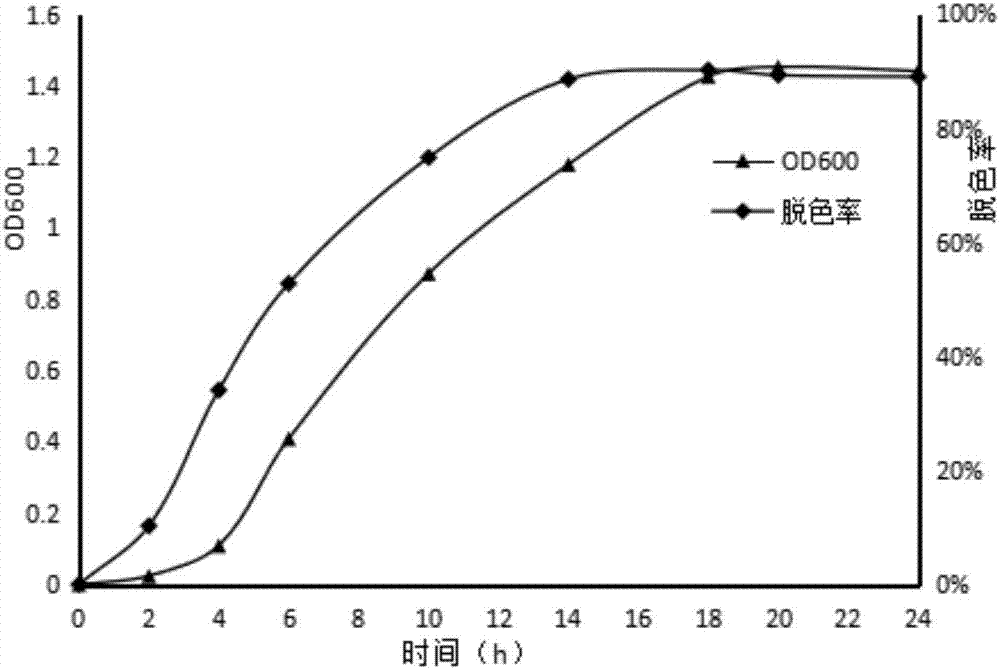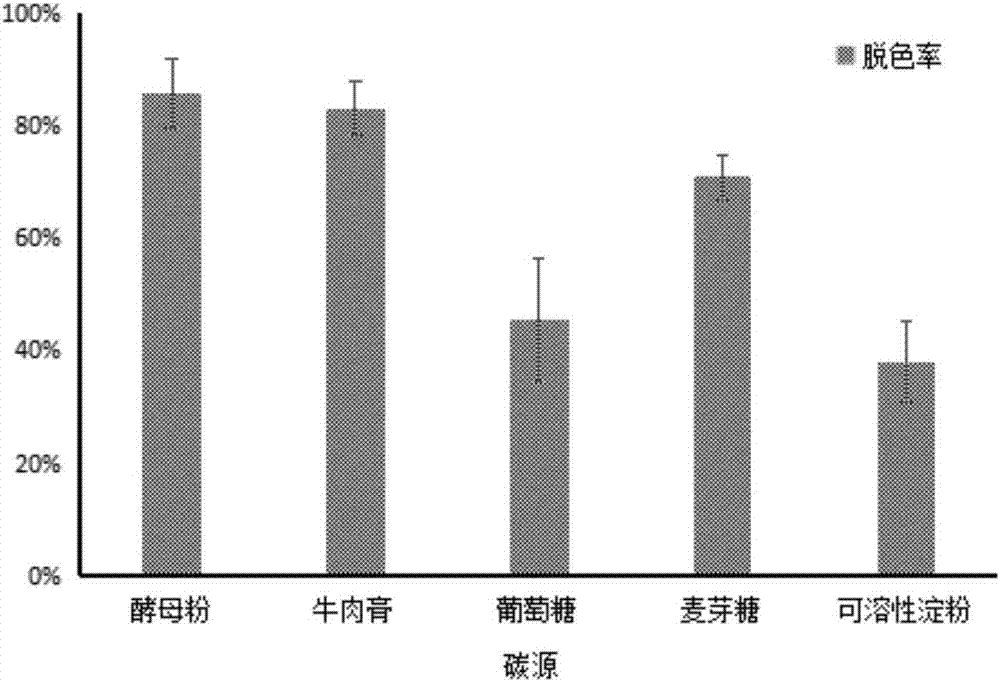Stenotrophomonas acidaminiphila and application thereof
A technology of Stenotrophomonas and culture medium, applied in the direction of bacteria, microorganisms, microorganisms, etc., can solve the problems of poor paint resistance, poor solvent resistance, high viscosity, etc., achieve good tolerance and improve adaptability , good degradation effect
- Summary
- Abstract
- Description
- Claims
- Application Information
AI Technical Summary
Problems solved by technology
Method used
Image
Examples
Embodiment 1
[0035] 1. Isolation of strains
[0036] (1) Collect the activated sludge from the sewage treatment plant and put it in a glass acclimation device with a length of 31.2cm, a width of 22.0cm and a height of 22.5cm, and use an air compressor without adding nutrients and without exchange of water in and out. Intermittent aeration for 3 days. Then change the water, discharge about 10L of mud-water mixture in the device, add nutrient solution and carry out uninterrupted aeration. After cultivating for 10 days, add Pigment Red 23 solution while adding nutrient solution, keep the concentration of Pigment Red 23 in the device at about 10 mg / L, and perform domestication according to the SBR process (water intake, aeration, standing, draining, idle) Cultivate, change the water every other day, and cultivate and acclimatize for 30 days. Preparation of culture medium: 400mg / L glucose, 80mg / L anhydrous sodium acetate, 125mg / L NaHCO 3 , 4.75mg / L KCl, 2.5mg / L anhydrous CaCl 2 , 24mg / L KH ...
Embodiment 2
[0049] Inoculate the strain into Pigment Red 23 decolorization medium, measure its OD600 and absorbance at 579nm every 2 hours, use the uninoculated decolorization medium as a blank control, draw the growth curve and pigment decolorization curve of the bacteria, and determine the best The decolorization time is 18h. Select carbon source, nitrogen source, inoculation amount, temperature, pH, salinity, study the optimal conditions of a single factor, and judge the influence of each factor on the growth of the strain and the decolorization effect of the pigment. Different influence gradients are set for each factor. When studying the influence of a certain factor, only different influence levels are set for this factor, and other factors remain unchanged. All experiments were set up in three parallel experiments.
[0050] The results showed that the most suitable decolorization conditions for Stenotrophomonas acidaminiphila SP-3 were yeast powder as the nutrient source, the inoc...
Embodiment 3
[0071] Take 0.75g of sodium alginate in 50mL of sterile water, and make a colloidal solution after being completely dissolved under heating conditions, and then cool to 30°C. Under sterile conditions, mix 3mL of the bacterial suspension with the colloidal solution evenly. Use a 1mL syringe to quickly drop the mixture into the continuously stirring FeCl 3 In the solution, uniform and regular pellets are formed, and the pellets are soaked in FeCl 3 solution, and placed in a refrigerator at 4°C for 24 hours. Wash the cured and cross-linked pellets twice with distilled water to obtain immobilized microbial pellets, such as Figure 9 shown.
[0072] In the optimal nutrient source concentration is yeast powder, 1g yeast powder, 0.1g / L CaCl 2 , 0.5g / L MgSO 4 ·7H 2 O, 1g / LKH 2 PO 4 , 1g / L Na 2 HPO 4 , 100mg / L Pigment Red 23, 1L of distilled water to prepare decolorization medium, pH=6.5. Under sterile conditions, aliquot 100mL of decolorization medium into 250mL sterilized ...
PUM
 Login to View More
Login to View More Abstract
Description
Claims
Application Information
 Login to View More
Login to View More - R&D
- Intellectual Property
- Life Sciences
- Materials
- Tech Scout
- Unparalleled Data Quality
- Higher Quality Content
- 60% Fewer Hallucinations
Browse by: Latest US Patents, China's latest patents, Technical Efficacy Thesaurus, Application Domain, Technology Topic, Popular Technical Reports.
© 2025 PatSnap. All rights reserved.Legal|Privacy policy|Modern Slavery Act Transparency Statement|Sitemap|About US| Contact US: help@patsnap.com



